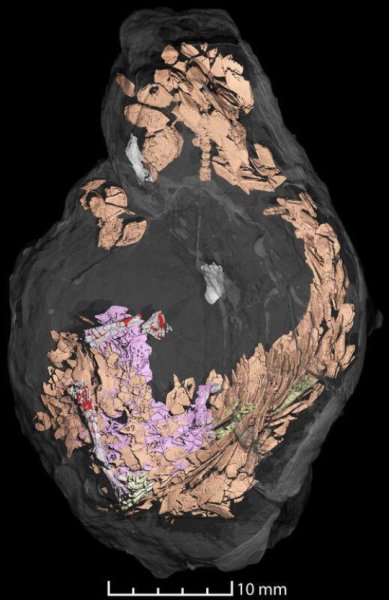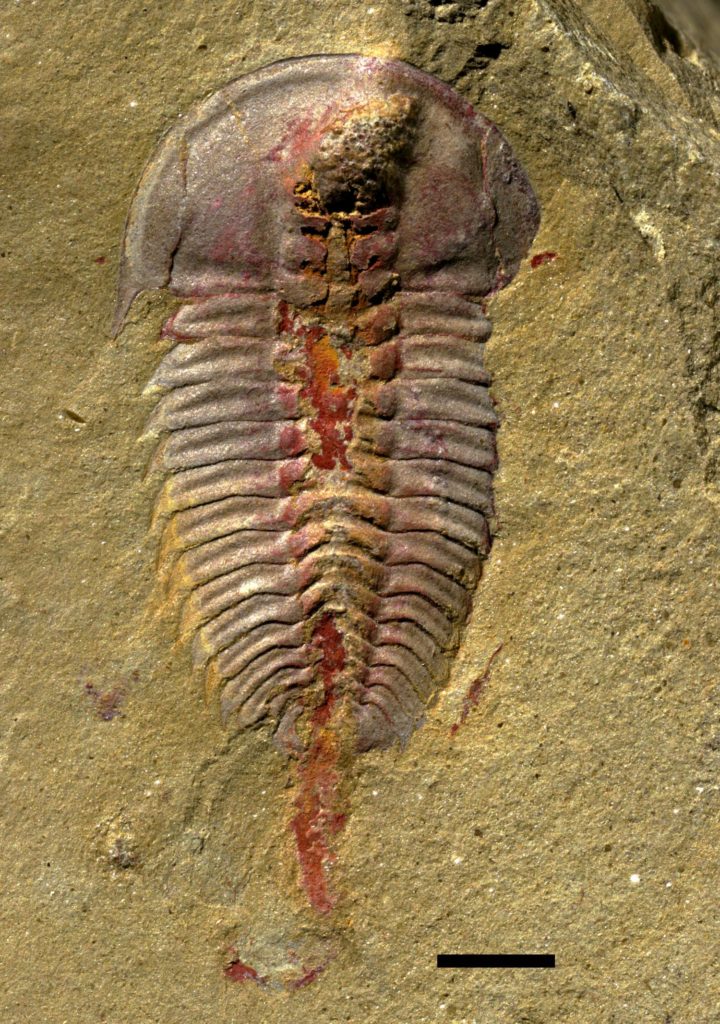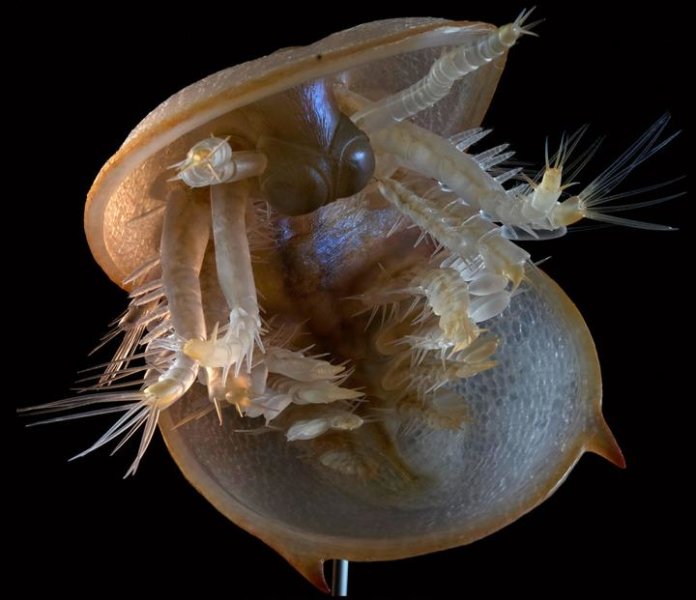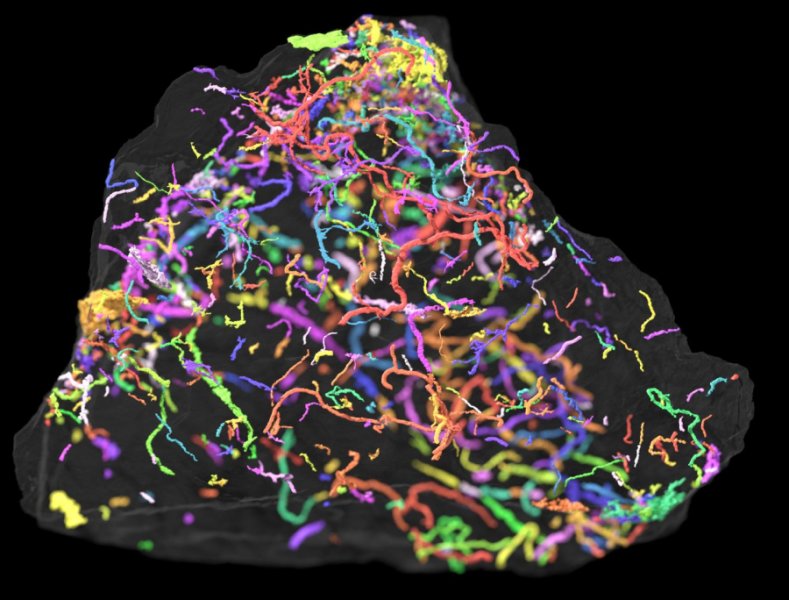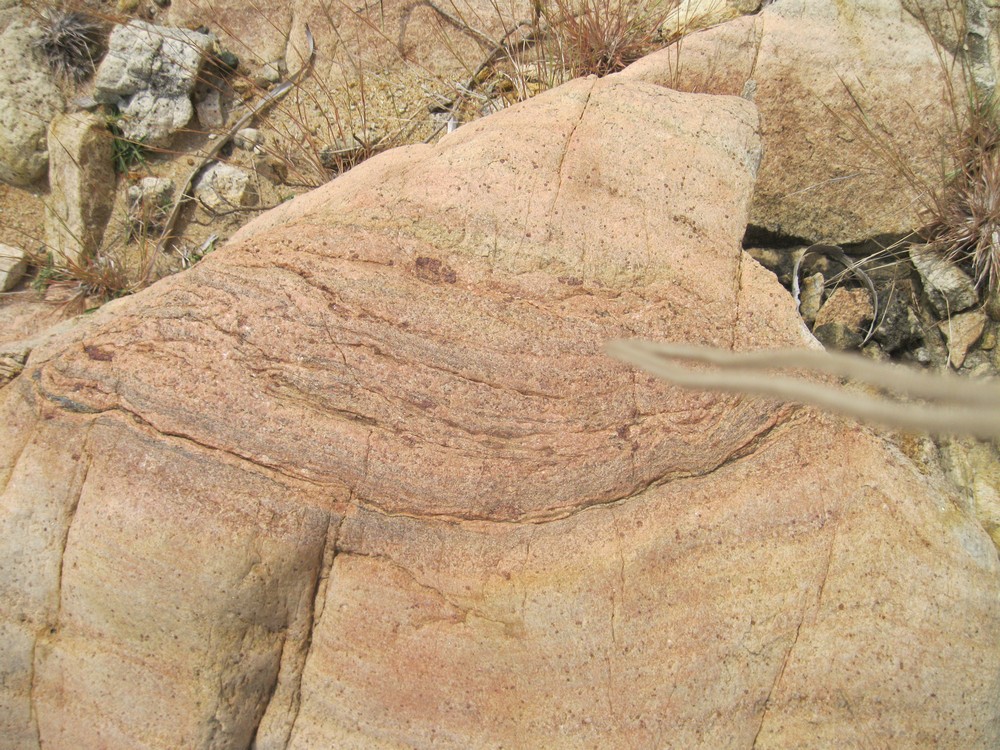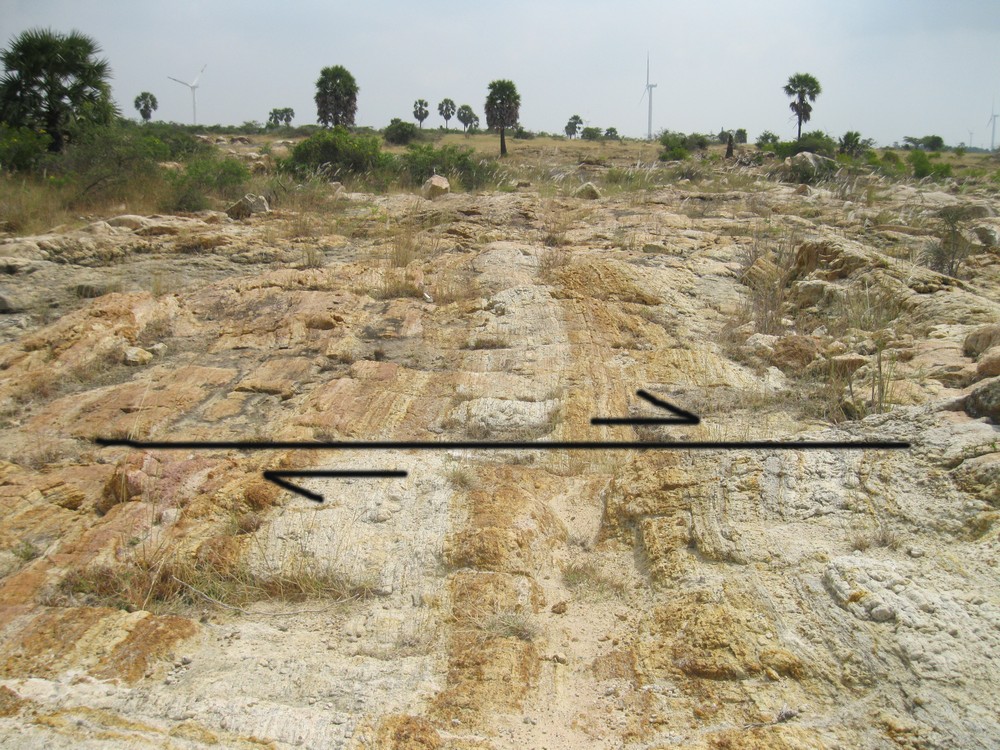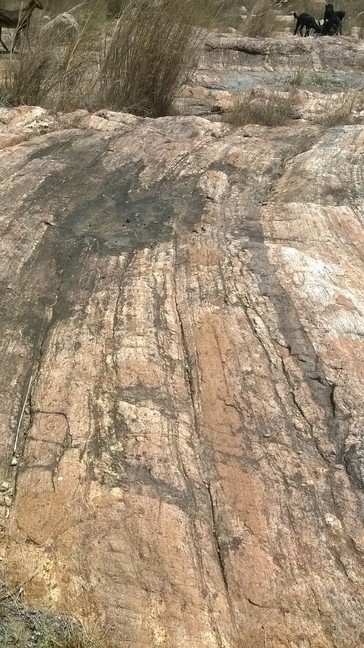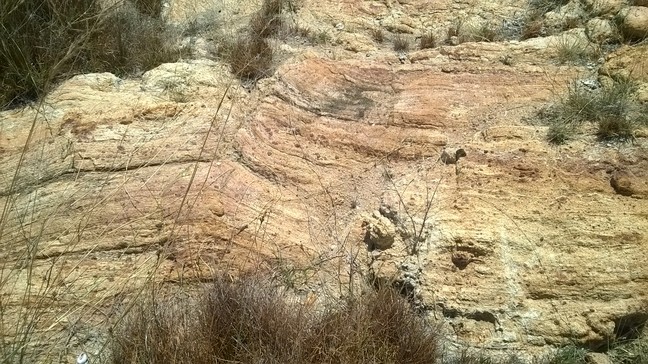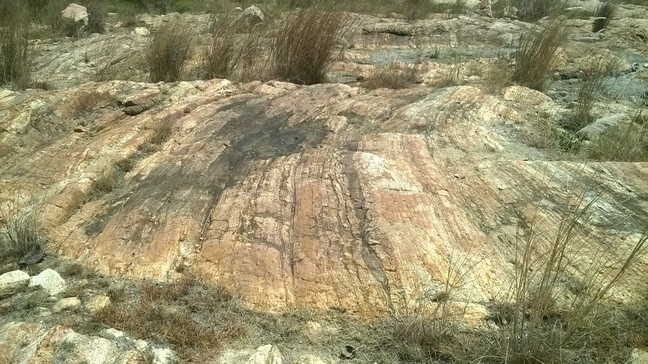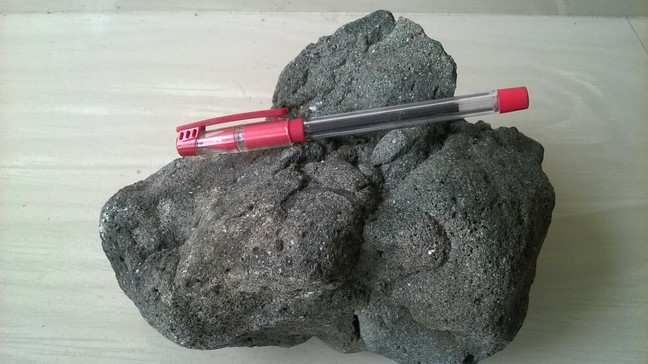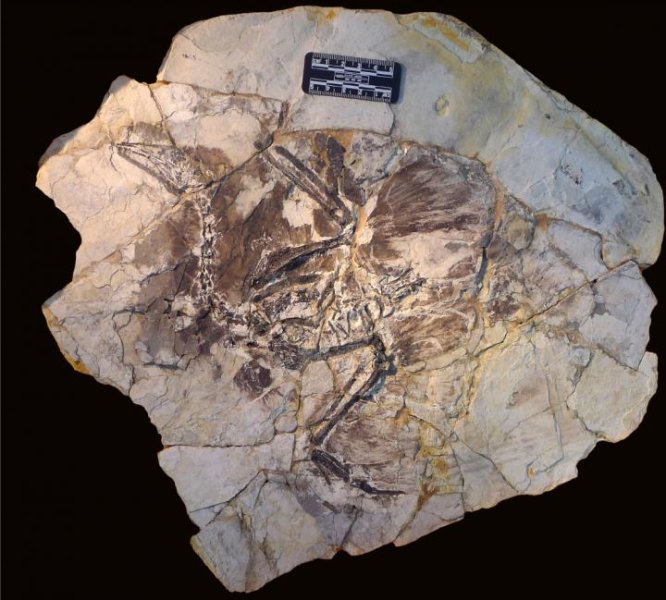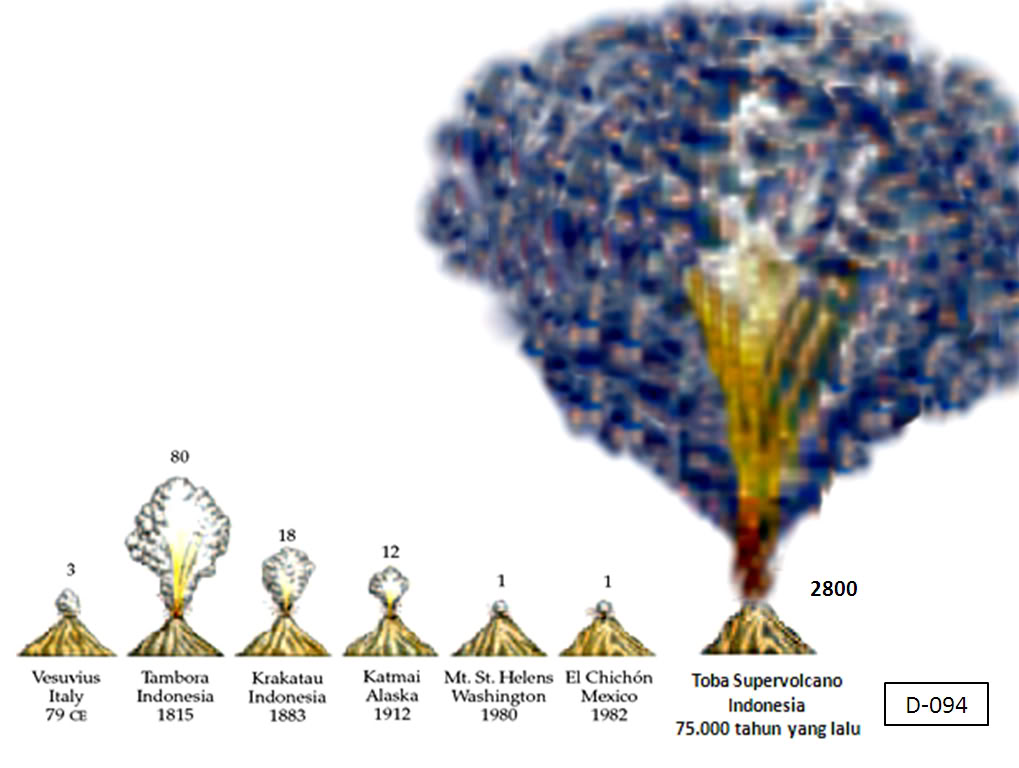Polypterids are weird and puzzling African fish that have perplexed biologists since they were discovered during Napoleon’s expedition to Egypt in the late 1700s.
Often called living fossils, these eel-like misfits have lungs and fleshy pectoral fins, bony plates and thick scales reminiscent of ancient fossil fish, and flag-like fins along their back that are unique.
For several decades, scientists have placed polypterids down near the base of the family tree of ray-finned fish, a large group believed to have originated around 385 million years ago.
But a new study that used CT scans to probe three-dimensionally preserved fossil fish skulls shakes up the fish family tree by concluding that the emergence of polypterids occurred much later than researchers had thought. The findings also suggest that the origin of all modern ray-finned fish may have occurred tens of millions of years later than is generally believed.
@WFS,World Fossil Society,Riffin T Sajeev,Russel T Sajeev

The skull of a 250 million year old fossil fish and a virtual model of its internal skeleton, along with a life reconstruction.Credit: Andrey Atuchin
The international research team was led by Sam Giles of the University of Oxford and includes University of Michigan paleontologist Matt Friedman. A paper summarizing the findings is scheduled for publication Aug. 30 in Nature.
“This causes a shakeup in the fish family tree, which indicates that the ancestor shared by all ray-finned fishes lived tens of millions of years after previously thought, maybe in the aftermath of a mass extinction event around 360 million years ago that decimated many other groups,” said Friedman, an associate curator at the U-M Museum of Paleontology and an associate professor in the Department of Earth and Environmental Sciences.
Ray-finned fish represent about half of all backboned animals on Earth. For every species of mammal, bird, reptile and amphibian on land, there is a species of bony fish in the ocean.
Polypterids include about a dozen species of African fish called bichirs and a single species of ropefish. They have long defied classification but are generally accepted to be the most primitive living ray-finned fish, separated from the other modern groups by a host of long-extinct fossil fish.
But the new CT study repositions polypterids on the fish evolutionary tree so they are “nestled neatly back more closely with other living ray-finned fishes, kicking a range of fossil ray-fins to a more distant branch of the evolutionary tree,” said Oxford’s Giles, first author of the Nature paper.
“These results change our understanding of when the largest living group of vertebrates evolved and allow us to iron out a lot of the wrinkles in our understanding of the sequence of evolutionary events.”
An enduring puzzle about polypterids has been the lack of early fossil evidence. The oldest fossil polypterids are just 90 million years old, leaving a gap of more than a quarter billion years in the fossil record. If polypterids are really as old scientists have believed, where’s the fossil evidence?
To get at some answers, the researchers examined high-definition computed tomography (CT) scans of Fukangichthys, a 230 million-year-old fossil fish from China that belongs to a widespread group of fossil fish called scanilepiforms.
Analysis of physical characteristics in three-dimensionally preserved Fukangichthys skulls, as well as an examination of DNA sequences from 12 genes, revealed that scanilepiforms are actually ancient cousins of polypterids. Scanilepiforms originated in the Triassic Period, 252 to 201 million years ago, when the first dinosaurs were evolving on land.
“While this finding extends the fossil record of polypterids, it also has some unexpected consequences,” U-M’s Friedman said. “It shows that many features of polypterids aren’t primitive at all, but rather are specializations that evolved later in their history.”
Said Oxford’s Giles: “Polypterids appear to have undergone several reversals in their evolution, which has clouded the view of their position in the fish family tree. It’s like if your brand new smart phone came with a rotary dialer and without Wi-Fi. We know it’s the latest handset, but its characteristics might lead us to thinking it’s an older model.”
This repositioning of the polypterids sends shock waves through the fish family tree and suggests that ray-finned fish may have emerged tens of millions of years later than scientists had thought, near the boundary between the Devonian and Carboniferous periods about 360 million years ago.
“Analyses like these are powerful tools and go to show that paleontology doesn’t always rely on the discovery of new fossils,” Giles said. “Re-examination of old fossils using new techniques is just as important for revitalizing our understanding of vertebrate evolution.”
The other authors of Nature paper are Guang-Hui Xu of the Chinese Academy of Sciences and Thomas Near of Yale University.
Giles was supported by a Junior Research Fellowship from Christ Church, Oxford, and a L’Oréal-UNESCO For Women in Science Fellowship. Xu was supported by the National Natural Science Foundation of China. Near was supported by the U.S. National Science Foundation and the Bingham Oceanographic Fund from the Peabody Museum of Natural History at Yale University. Friedman was supported by a Philip Leverhulme Prize and a Leverhulme Trust Project Grant, and by U-M’s Department of Earth and Environmental Sciences, Museum of Paleontology, and College of Literature, Science, and the Arts.













 September 24th, 2017
September 24th, 2017  Riffin
Riffin 